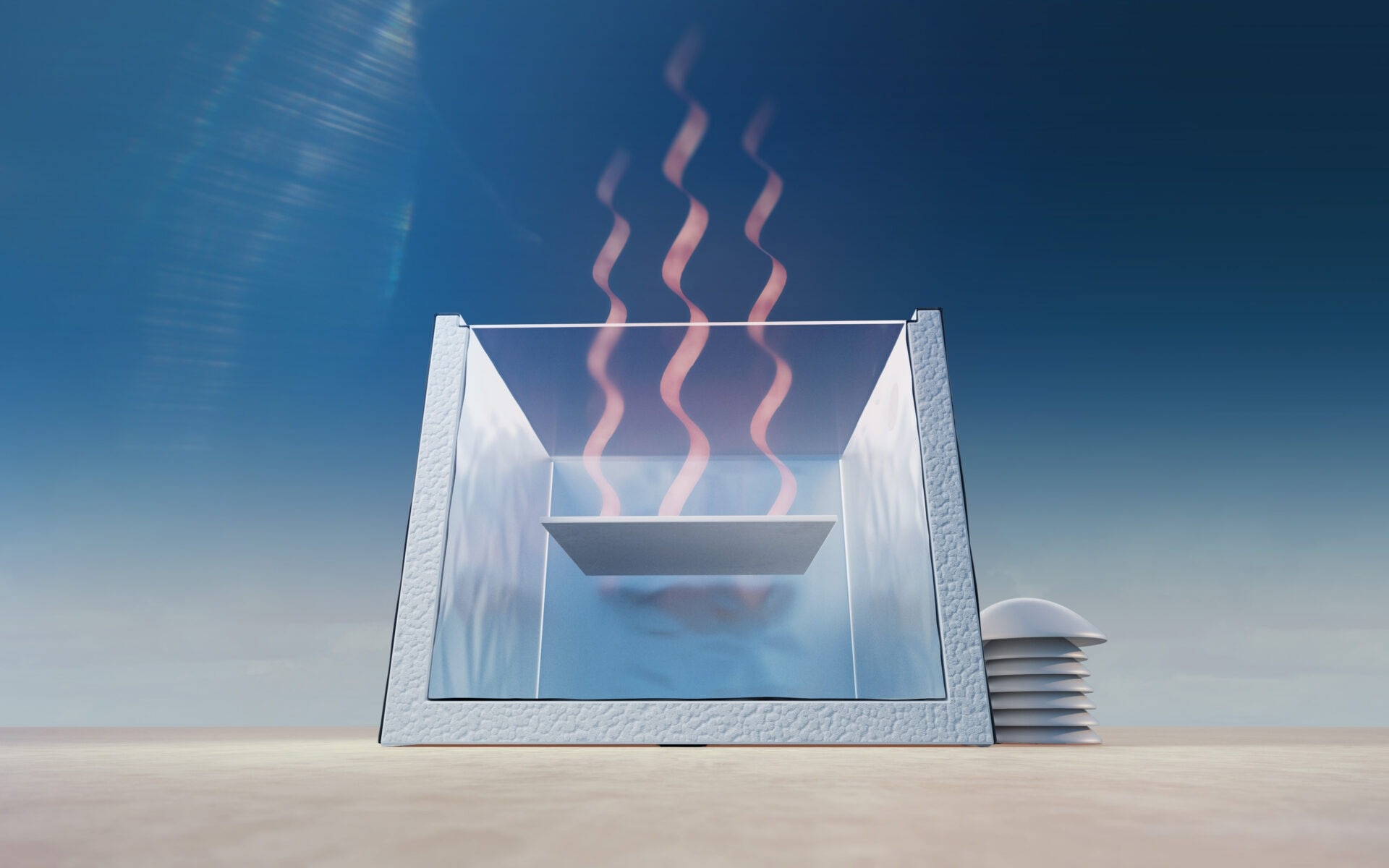A zero-carbon-emission cooling technology that uses no electricity and instead emits heat directly into space would be a game-changer for tackling climate change. However, poor standardization and a lack of transparency impede this promising radiative cooling technology.
 Radiative-cooling devices offer electricity-free cooling by radiating heat that is not absorbed by the atmosphere, instead escaping the Earth's atmosphere to outer space. Image Credit: © 2023 KAUST; Xavier Pita
Radiative-cooling devices offer electricity-free cooling by radiating heat that is not absorbed by the atmosphere, instead escaping the Earth's atmosphere to outer space. Image Credit: © 2023 KAUST; Xavier Pita
Best practice guidelines highlighted by Qiaoqiang Gan, a leading radiative-cooling researcher at KAUST, could help refocus the research field.
Through the narrow wavelength range known as the atmospheric transparent window, radiative cooling technologies provide cooling without electricity. In this window, the heat does not return to the atmosphere but rather escapes into space, which, at three degrees above absolute zero, functions as a huge heat sink and easily absorbs the emitted heat.
The technology is particularly attractive to address local cooling needs in Saudi Arabia.
Qiaoqiang Gan, King Abdullah University of Science and Technology
At night, many materials exhibit radiative cooling.
The key challenge is to achieve cooling to below ambient temperatures while under direct sunlight. One must simultaneously minimize the heating effect of solar absorption while maximizing thermal emission in the atmospheric window.
Qiaoqiang Gan, King Abdullah University of Science and Technology
Despite the difficulties, there is a great deal of interest in this sustainable cooling technology because of its potential to mitigate the effects of global warming.
According to Gan, there are various potential pitfalls when testing and reporting new radiative cooling materials. Because radiative cooling utilizes the sky as a heat sink, most experiments are carried out in the local outdoor environment.
Due to uncontrollable weather conditions and variations in measurement settings, it becomes challenging to compare and comprehend the actual cooling performance of different technologies, and so to identify the best strategies among the various radiative cooling designs being studied.
Qiaoqiang Gan, King Abdullah University of Science and Technology
“After discussing these issues with a senior editor at Nature Sustainability, we were invited to write an article proposing standardized criteria and characterization procedures for evaluating radiative cooling performance,” Gan adds.
To enhance the reliability and comparability of radiative-cooling research, his team developed clear recommendations for radiative-cooling material characterization—as well as procedures for calculating cooling.
“We hope this framework will contribute to the advancement of sustainable and efficient cooling solutions,” Gan notes.
Given the extreme heatwave of 2022 and the record-breaking high temperatures observed in many major cities during the first half of 2023, the need for electricity-free cooling solutions is more essential than ever, he adds.
“By leveraging radiative cooling, which has the potential for zero or even negative carbon emissions, we can effectively address this global challenge and support the Saudi national strategic plan of Vision 2030,” Gan concludes.
Journal Reference:
Zhou, L., et al. (2023). Best practices for radiative cooling. Nature Sustainability. doi.org/10.1038/s41893-023-01170-0.